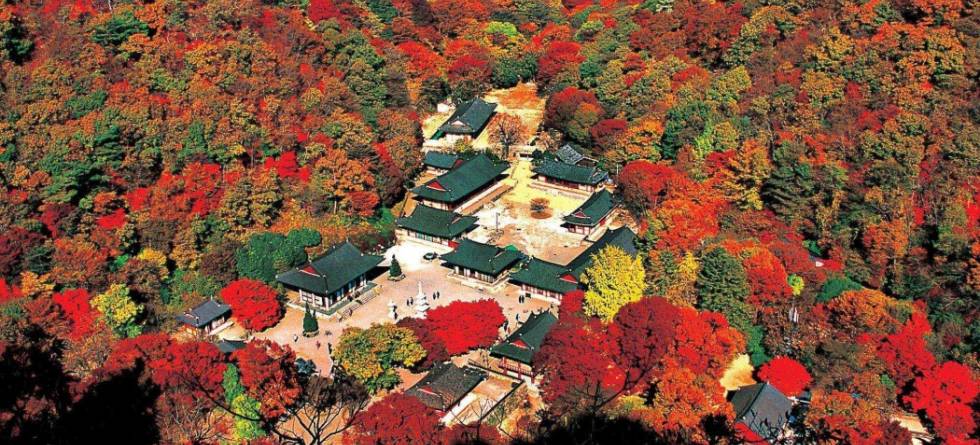Written by Hanna Lee, researcher at the Bjerknes Centre and NORCE
I am originally from South Korea, where the people are very proud to have over 70 percent of our land area covered with forests. This is an incredible amount of greenness for a small country about 1/4 of the size of Norway and with a 10 times larger population. However, it has not always been like this. After the Korean War in the 1950s, our land was devastated by the aftermath of the war and poverty. The forests had been torn down to bare ground from cutting down the trees for fuel.
In the 1970s, there was a government led movement to reforest our land and after decades of this effort, it became green again. This is perhaps one of the most successful stories of reforestation in the entire world. I still remember from my childhood, where we were taught from school all the benefits of forests. It was engraved in my brain that there are essentially no negative effects from planting trees; they provide clean air, clean water, store carbon, produce food and timber, and a place to enjoy.
Now I am a research scientist at NORCE Norwegian Research Centre and Bjerknes Centre for Climate Research. I work towards understanding how climate affects ecosystems on land and how changes in ecosystems affect climate. I have been investigating how land use and land cover changes affect climate. One of the topics that I have been working closely with in the past few years is about planting trees in Norway to mitigate climate. When I started to look at tree planting from the climate point of view, I realized that my past knowledge about the benefits of forests was not entirely correct.
I still believe that forests provide countless benefits to society. As I learned in school, forests do provide clean air, clean water, services, store carbon, and most importantly produce profits. Particularly, timber production is a very large and important industry in Norway, where it creates many jobs and large revenue. But when it comes to planting trees to help climate change, we must focus more on the benefits of forests on climate. This is where things get complicated.
The argument supporting tree planting to mitigate climate is based on the fact that trees take up CO2, a greenhouse gas, and store it in the biomass. This is correct. Trees do store large amounts of carbon and in doing so mitigate climate. However, what is often neglected is the physical effects of tree planting on climate. Land surface structure plays a large role in absorbing and reflecting incoming energy from space.
Forests have darker surfaces than open landscapes, which absorb more energy. This becomes more pronounced during the snow season, where snow covered white surfaces reflect energy back to space but dark forested areas absorb energy. Forests tend to have deeper roots and larger leaf areas, thus transpire more water vapors to the atmosphere.
As a result, when we assess the effects of tree planting on climate, we must combine both effects; the chemical (greenhouse gas reduction) and physical effects. It is not very simple to assess this and the effects are not as clear as we want them to be. If we are not very careful, our good will to mitigate climate could even cause opposite effects.
Unfortunately, land use and land cover change such as tree planting can cause irreversible damage to the ecosystem. It can take many decades to reverse it once the damage is done. Therefore, we must include all of these effects and uncertainties before implementing such a policy. We must calculate the cost benefits of carbon uptake from tree planting not only against the physical effects such as albedo, but also to losses in biodiversity and certain habitats.
Landscapes can also have historical and cultural value. Many memories and feelings of people can be attached to certain landscapes and we run the risk of losing them as well when we make changes in landscape.
Moreover, since the policy implementation focuses on climate mitigation, the cost effectiveness should weigh more towards the effects on climate. If the benefits to climate mitigation are not very clear or effective, we should not promote tree planting as part of our climate mitigation strategy.
I want to emphasize that I support forestry as an important and profitable industry in Norway. But promoting tree planting for the purpose of ‘climate mitigation’ when the benefits for climate are not straightforward could be risky and should be taken into account with more in depth consideration.
But I must admit that us scientists have not been very good at sharing the scientific findings with everyone. Recently, we conducted a survey asking people about their knowledge of the effects and consequences of tree planting. What surprised us was that the general public were very eager to gain more knowledge about this topic. This is entirely us scientists’ responsibility.
Together with my colleagues, I start a series of short pieces explaining the role of forests on climate and the consequences of tree planting on ecosystems. We hope that this effort can help increase knowledge of the general public on this topic and help base the decision-making built under sound scientific knowledge.

